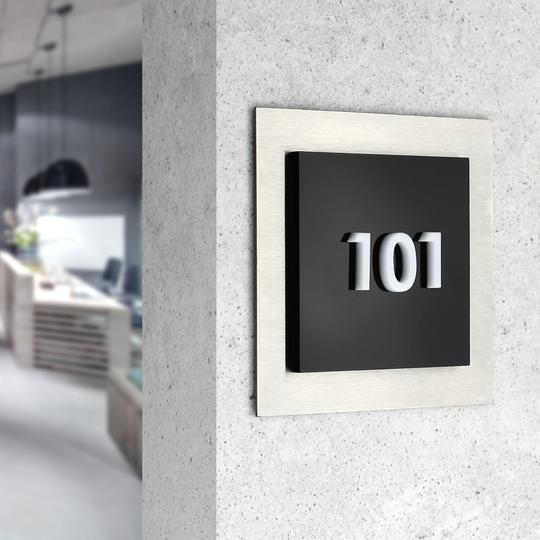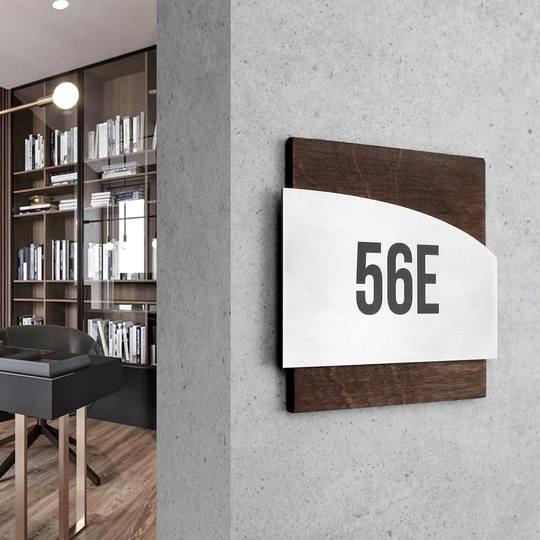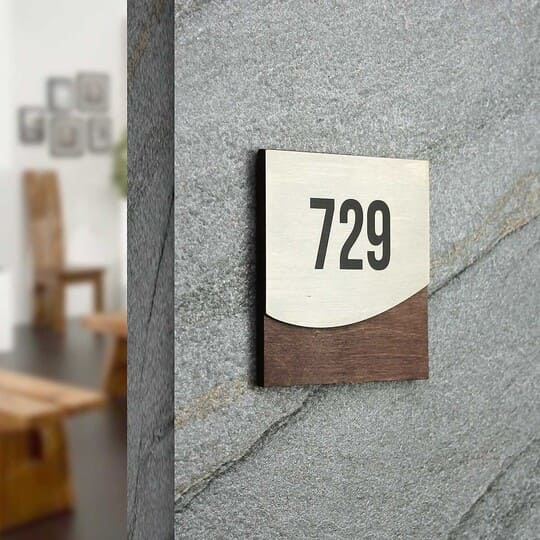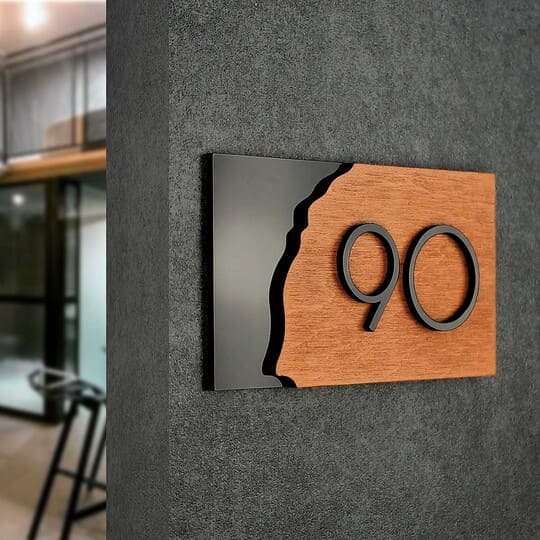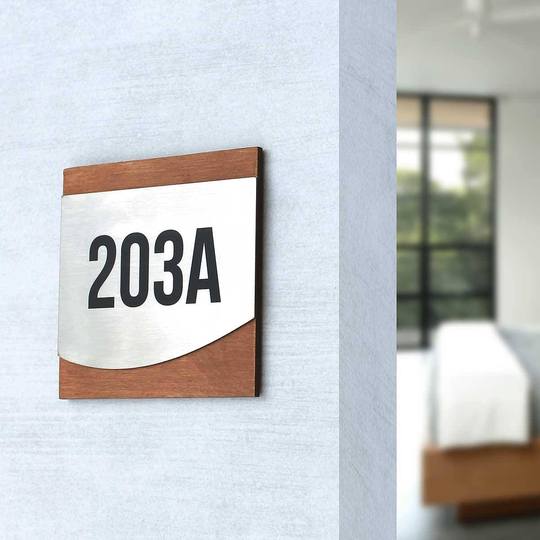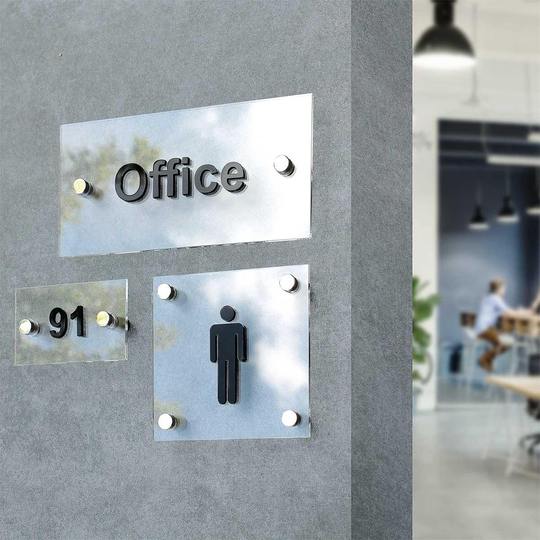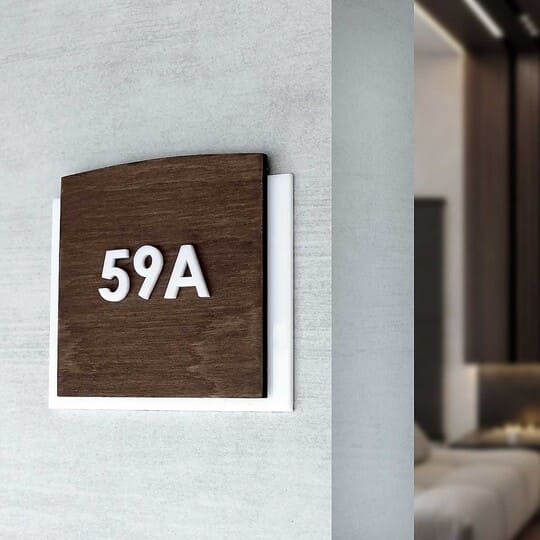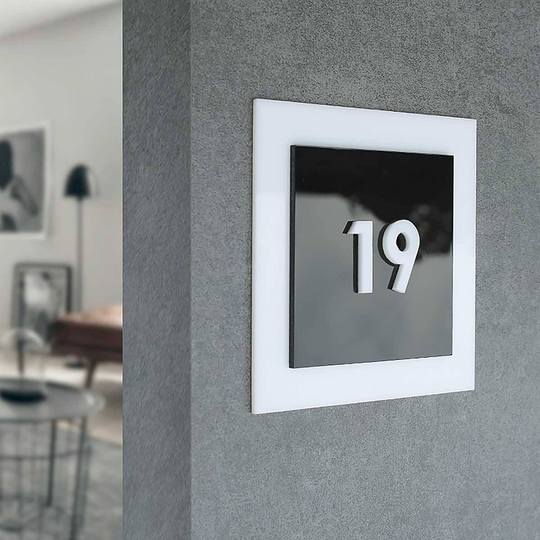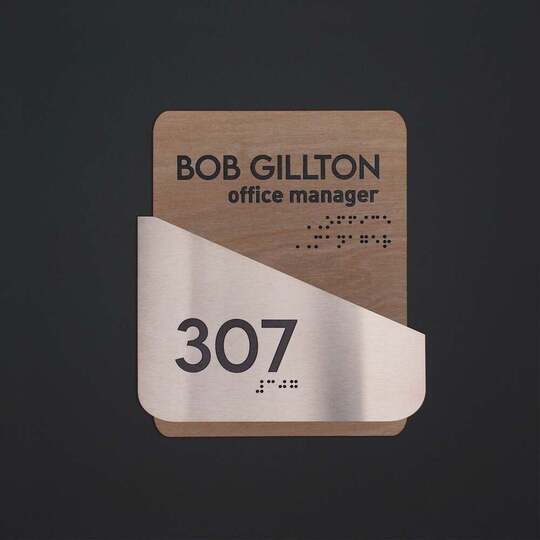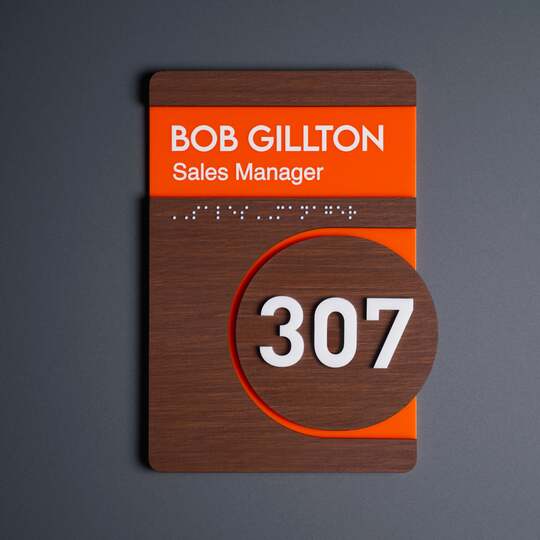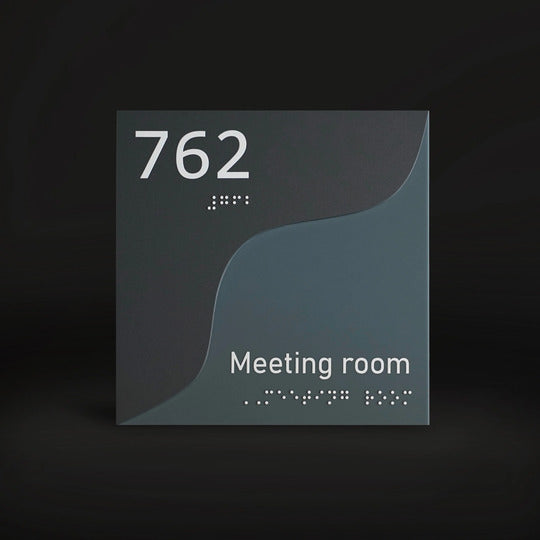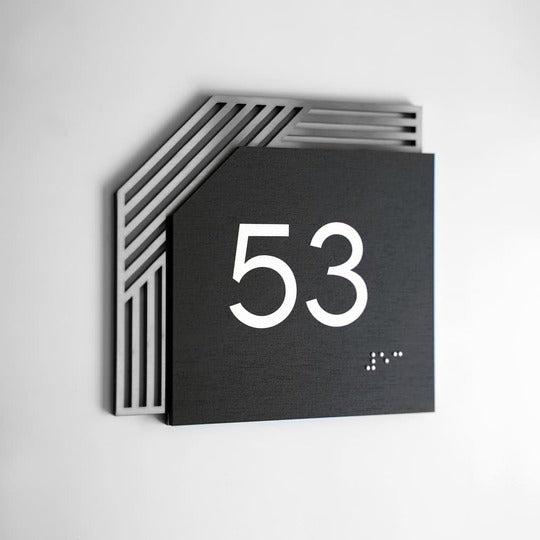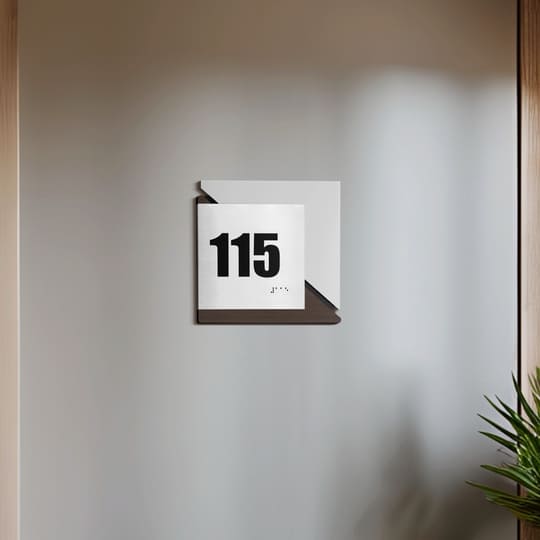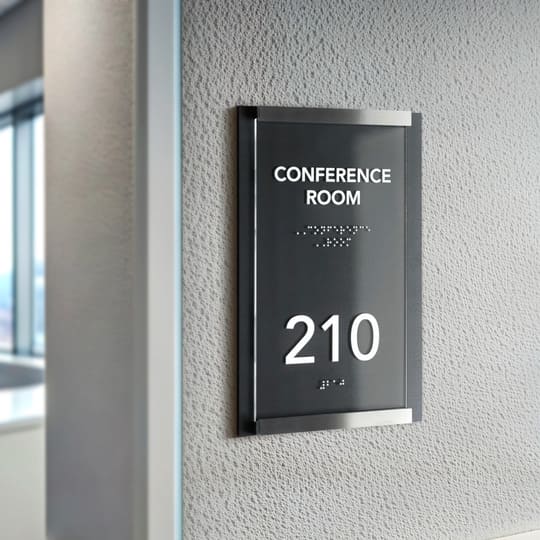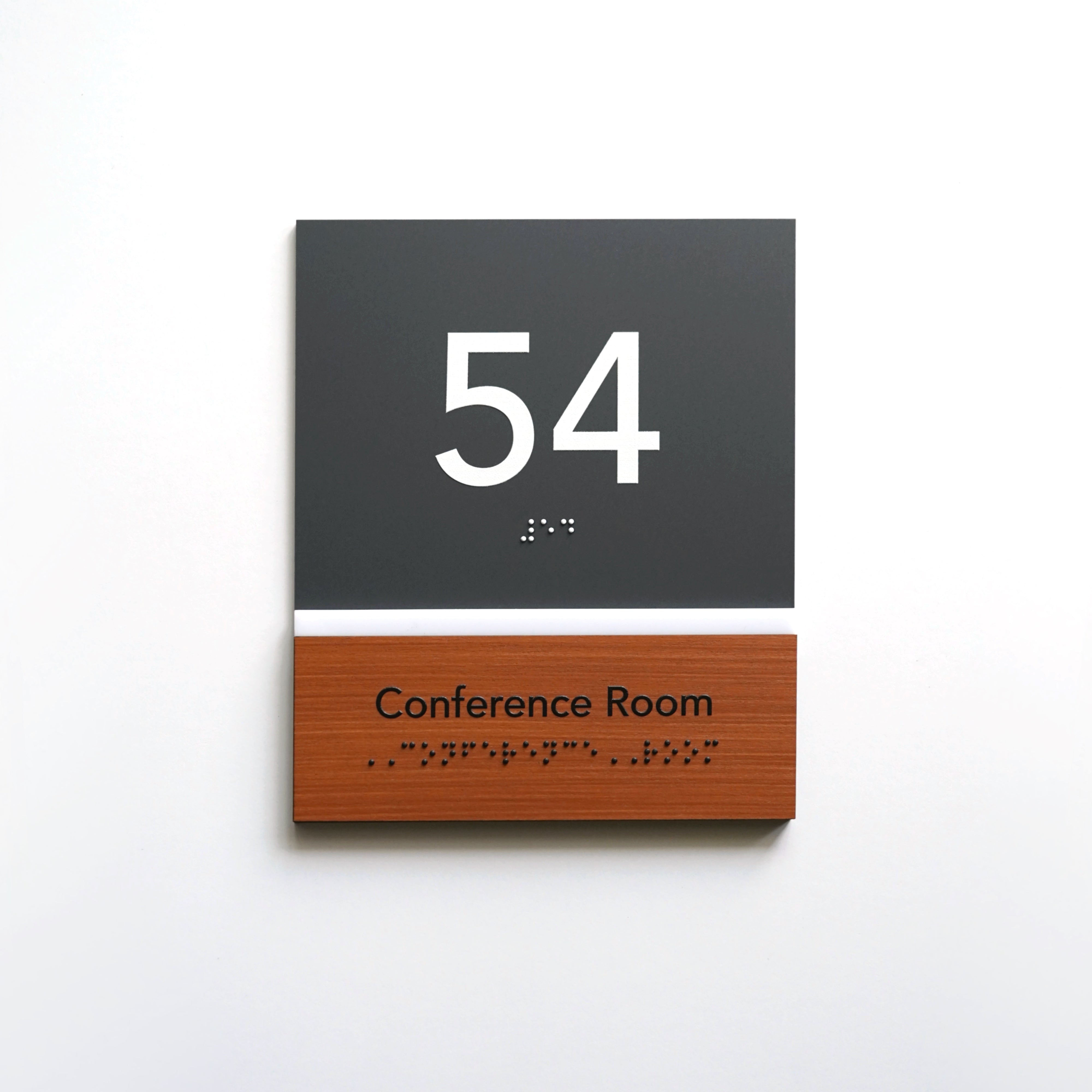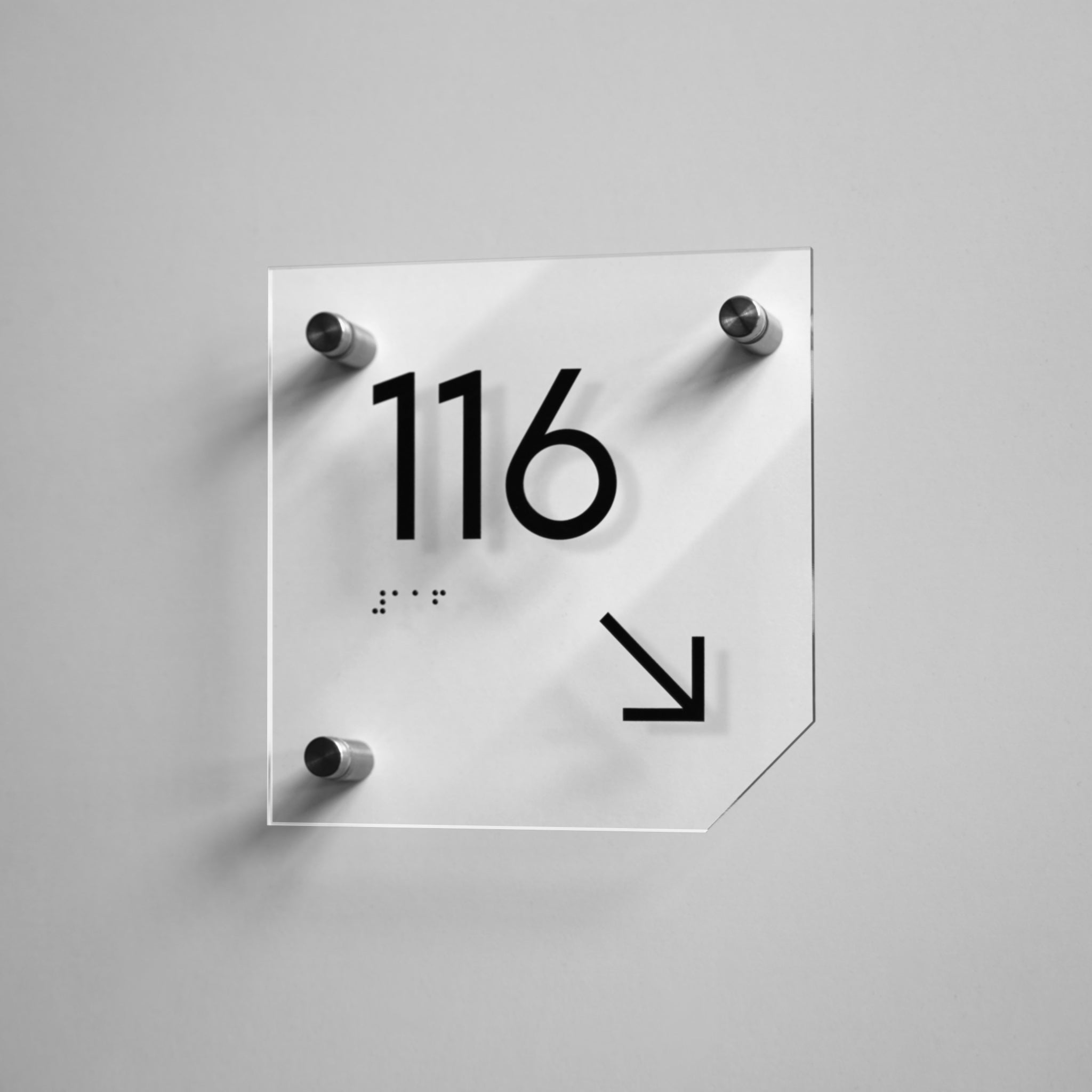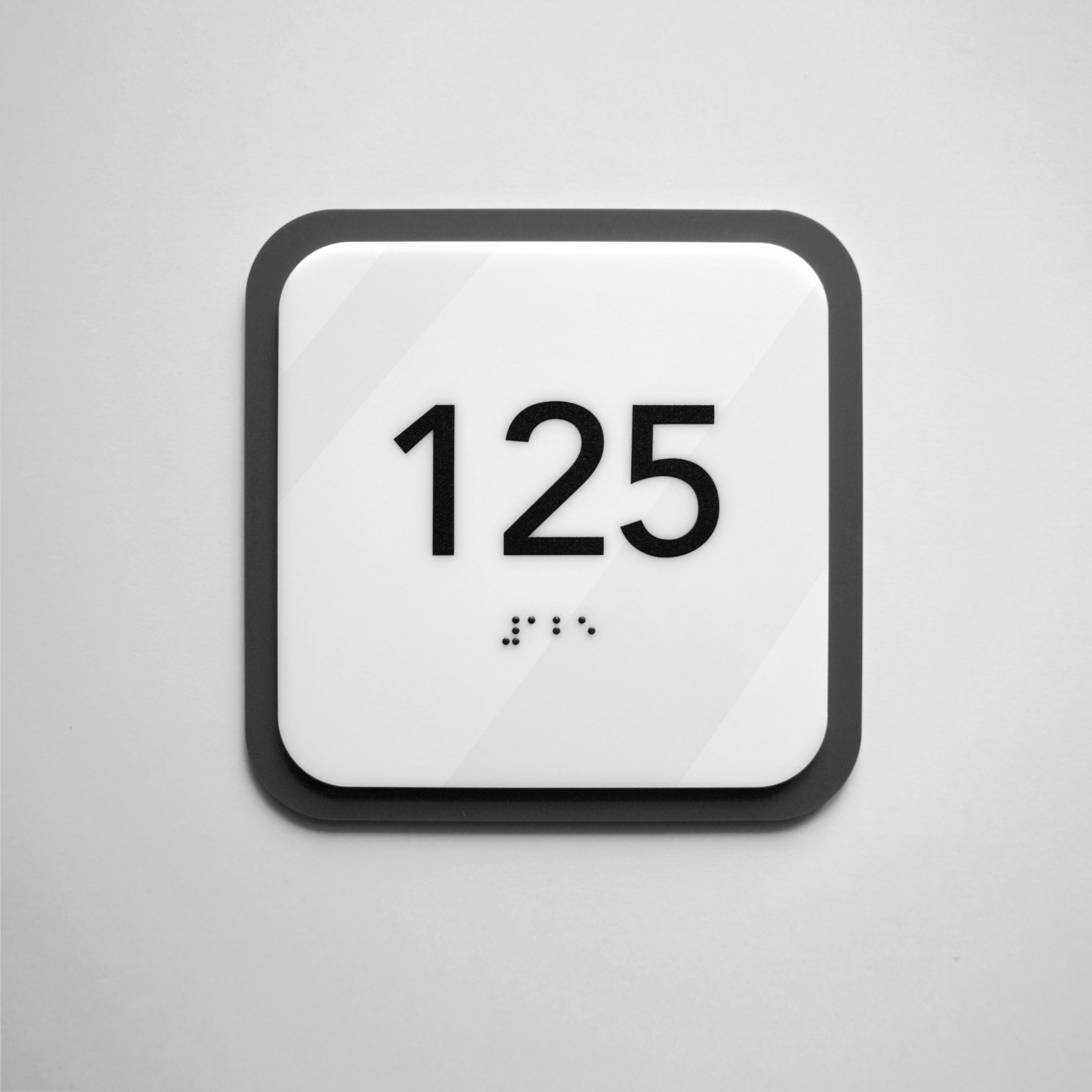
Door signs installation done right: expert tips and top recommendations
Proper plate installation is key to ensuring durable plates that maintain their appearance over time. Even high-quality plates made of wood, acrylic, or metal can lose their visual appeal if installed incorrectly. For any business aiming to make a positive impression on customers and visitors, this detail is crucial. That’s why it’s important to understand how to hang a sign correctly, so that it has a neat look and functions for many years, know the reliable plate mounting methods, avoid common mistakes, and organize the process professionally.
In modern offices and public spaces, directions serve multiple purposes. They help people navigate through a building, mark room numbers, and also serve as part of the interior. They provide important information and may include images, symbols, or Braille to improve accessibility. If the installation of signage is done poorly, even the most stylish and modern design loses its meaning. A crooked placement or a damaged door surface not only spoils the overall appearance but also creates a feeling of negligence. That’s why a thoughtful approach to this process becomes both an informative and practical tool that directly shapes the image of a company or institution.

Sign mounting methods in modern interiors
Bsign offers two optimal solutions. The first option is using double-sided tape. This method is considered the easiest and most convenient. It allows you to install wall signs without damaging the surface and without drilling mounting holes. With proper preparation of the surface, the tape can hold durable plates for years, keeping them aligned and secure.
The second method is using metal standoffs. They create a floating effect and emphasize the product’s modern look. Such solutions look especially harmonious in spaces with a minimalist design, where every detail contributes an elegant touch. In this case, modern interior signage not only provides information but also adds character to the office or public space, sometimes even serving as a decorative background element.
The right mounting choice depends on both the interior and the surface type. For office door signs, it is convenient to use double-sided adhesive tape, because it does not require drilling, while models with metal standoff mounts require drilled holes. This mounting option is ideal for walls and high-traffic areas where maximum reliability and a clean, professional look are essential.

Step-by-step guide to sign installation for long-term durability
To achieve a flawless result, certain steps should be followed. First you need to carefully determine the installation location, make precise markings, and use a level to avoid misalignment. Although it may seem minor, even a slight tilt is immediately noticeable and can diminish the overall impression of the space. Next, clean the surface from dust and grease, since a dirty surface reduces adhesion strength, whether you’re using tape or standoffs. If the product needs hanging on metal holders, it is important to pre-drill the holes and check the accuracy of the measurements.
Another key point is determining the correct mounting height. Custom door signs should be placed at eye level so that they remain clearly visible to visitors without the need to bend down or look up. In many offices and public buildings, there are even recommended standard heights that help maintain consistent logic in the placement of such elements. This improves navigation and reinforces a sense of order.
The final step is securing the plate and checking its stability. Gently press the decor element against the surface and hold it for a few seconds to allow the adhesive or mounting hardware to bond fully, and only then remove any protective film or cover plate. If everything is done according to instructions, the different signs become a natural part of the interior, providing accurate identification of the room while maintaining its neat look for years.
To make the process clearer, it’s helpful to follow a brief checklist of the key steps:
-
Prepare the surface by cleaning off dust and grease.
-
Make precise markings and align the placement.
-
Determine the optimal viewing distance and mounting height for better visibility.
-
Carefully mount the plate and check for security.

Why professional signage mounting matters
At first glance, using screws might seem like a simple and reliable method of mounting. However, when it comes to door signs, it is also important to take into account aesthetics. Screws can leave marks on office doors or walls and damage wood, acrylic, or other plate materials.
This is why professional installation is so important. It involves attention to detail, cleanliness in execution, and proper consideration of materials. At Bsign, metal standoff mounts are used. They ensure a secure hold while concealing the screws and preserving the integrity of the surface. This approach results in high-quality signs that look elegant and integrate naturally into the overall design of the space.

Consequences of improper installation
If the rules are ignored, even the most beautiful and durable signs will lose their professional look. Poor placement leads to misalignment, and over time the decor element may come loose, leaving behind damage. This results in extra costs for repair or replacement. In a business environment, it’s also a matter of image — an unevenly mounted plate or room number instantly gives off an impression of carelessness.
There’s also a safety concern: poorly mounted plates pose risks to visitors and customers. A falling plate can damage flooring or create a dangerous situation. Moreover, damaged wall or door finishes in public spaces look particularly unappealing and give clients the impression that the owner pays little attention to important details. Though seemingly minor, this detail can greatly impact the level of trust clients place in your business or facility.
The effects of poor sign installation often become noticeable gradually. First, a slight tilt becomes noticeable. Then, adhesive may wear off, and eventually, the product loses its grip entirely. As a result, instead of serving as a clear marker, it becomes a source of ongoing frustration.
Key issues caused by improper installation include:
-
• misalignment or tilting of the product;
-
• damage to doors or wall surfaces;
-
• risk of falling and injury to visitors;
-
• additional repair and replacement costs;
-
• a decrease in the level of trust and a negative impression of the space.
A professional approach allows businesses to avoid these problems and preserve both the plate and the integrity of the interior. In the business environment, this plays a key role, because attention to detail often reflects professionalism and genuine commitment to clients.

Practical sign maintenance after installation
To ensure that various signs continue to serve their purpose and remain an aesthetic part of the interior, it’s essential to follow proper installation techniques. Using only recommended mounting methods help prevent future issues and ensure long-term performance.
Regular maintenance is equally important. This includes timely signs cleaning to remove dust, using soft cloths, and avoiding harsh chemical products. Metal plates require specialized cleaners to preserve their shine, while wood and acrylic surfaces need a more delicate approach to maintain their natural look.
Lighting conditions and placement also play an important role. Exterior signs tend to accumulate dirt more quickly and require more frequent cleaning. When it comes to interior plates, maintaining the transparency of acrylic and the organic beauty of wood surfaces is the main task. Regular cleaning not only helps maintain a presentable appearance but also extends the lifespan of the plate.
For detailed care tips, refer to the article “How to care for design signs”, which offers practical advice for everyday use.

Benefits of proper interior signs installation
Professional sign installation is a blend of technique and aesthetics. Choosing the right mounting method, paying attention to detail, and maintaining the product properly ensures that your plate remains an enduring part of a stylish interior. For businesses, this is crucial, because this is the way visitors and customers form their first impression.
In modern buildings, where every detail matters, even a small door signage can highlight the level of organization and attention to comfort.
Proper placement also guarantees safety and practicality in daily use. Securely mounted plates stay in place, cause no inconvenience, and retain their neat appearance even in high-traffic areas.
Bsign’s high-quality plates are a prime example of how durable products can harmonize functionality with design. They help people navigate spaces, clearly mark room numbers, ensure accessibility with ADA signs and Braille while enhancing the overall aesthetic of the space.
If you’re looking for personalized advice on selecting the best signage materials and mounting methods tailored to your business, the Bsign team is ready to provide expert consultation.
